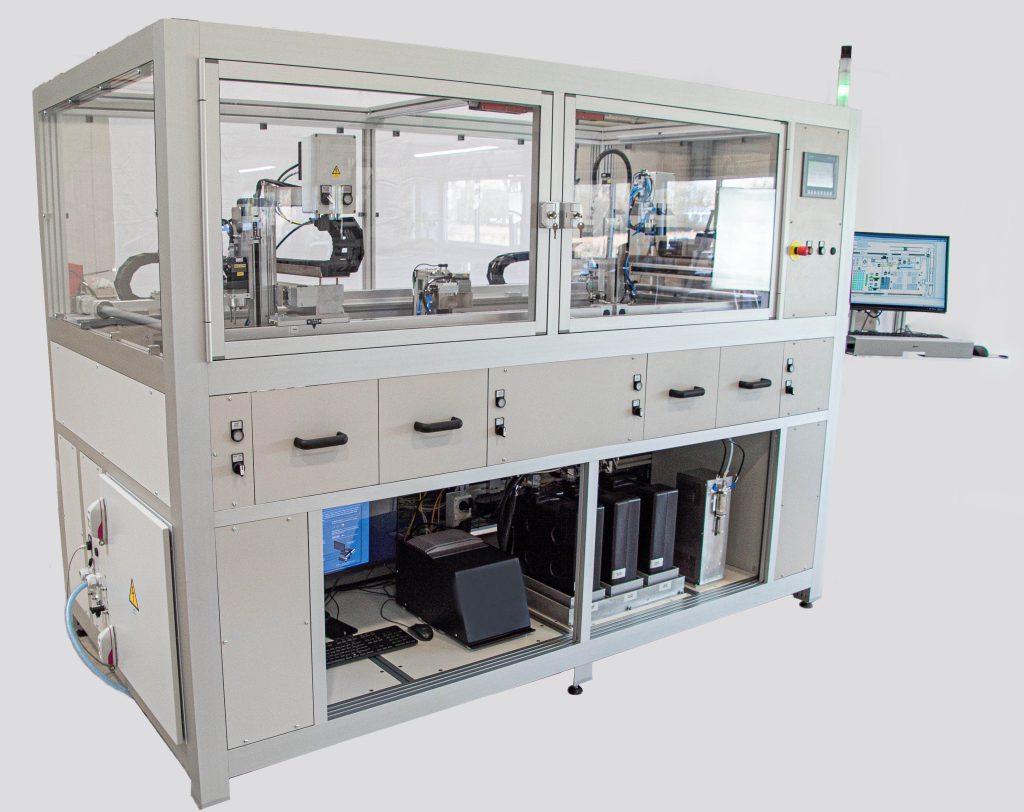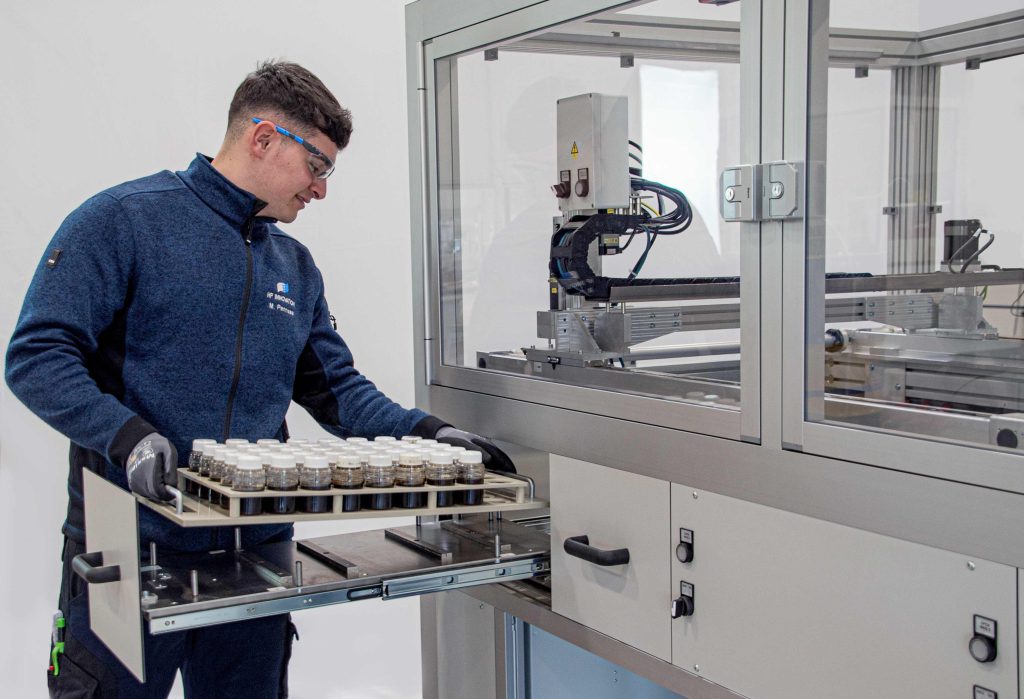
The HF automated PC D machine provides unparalleled precision in particle counting analysis, density determination, and sample dispensing for many other tests all at the same time.
Trays containing sample bottles are inserted into the machine and automatically registered. A cartesian robot transfers the bottles to a mixing station where samples are mixed and then degassed using ultrasonics.
Once degassed to remove air bubbles, the sample bottles are automatically decapped. The automated RoboPipette 6 removes aliquots for each of the tests from the open bottle.
One of these aliquots is pipetted into an automated Camera-based Canty Particle counter. One aliquot is pipetted into the density meter for analysis.
Subsequent aliquots from the bottle are dispensed into various tubes/containers that can be taken for ICP, FTIR, viscometry, GC or other analysis by the operator.
Other automated options include colour and turbidity determination, crackle testing, and automated analysis of viscosity and FTIR in the same module.

This system offers numerous competitive advantages, including: